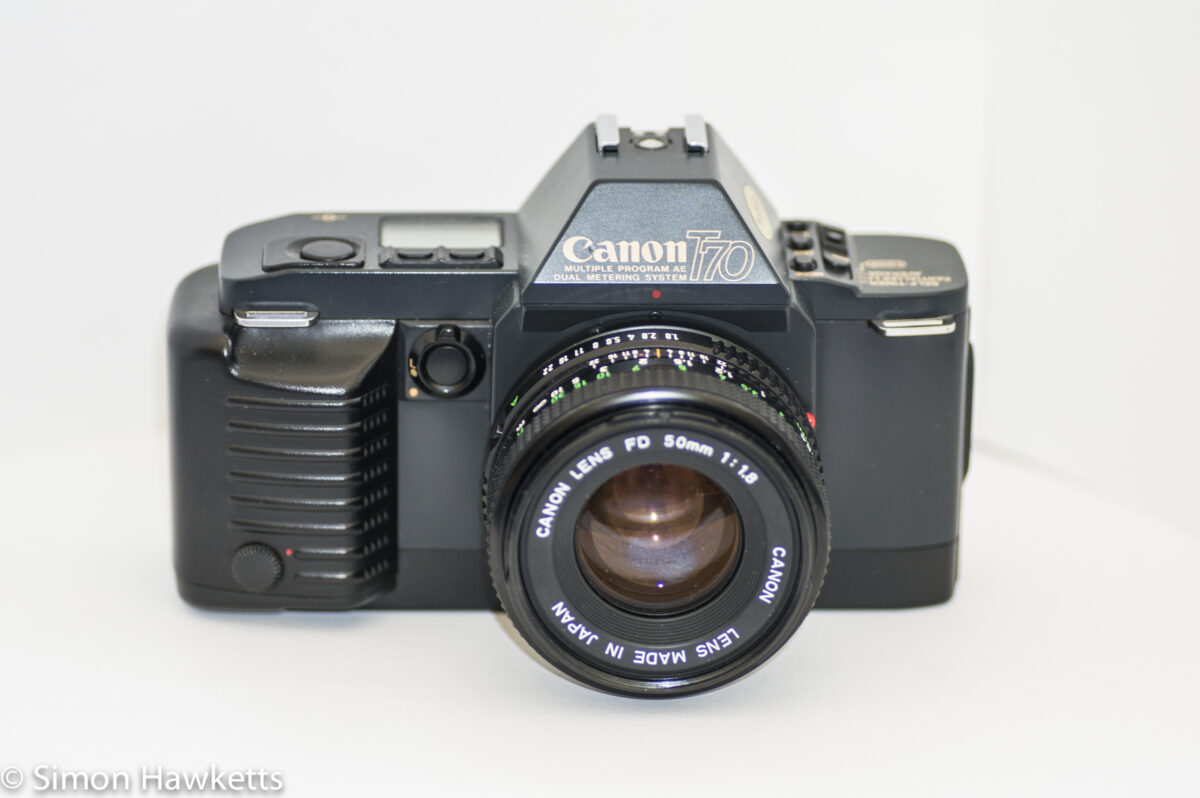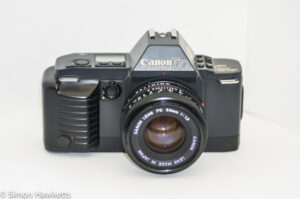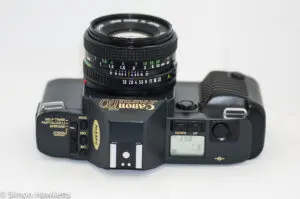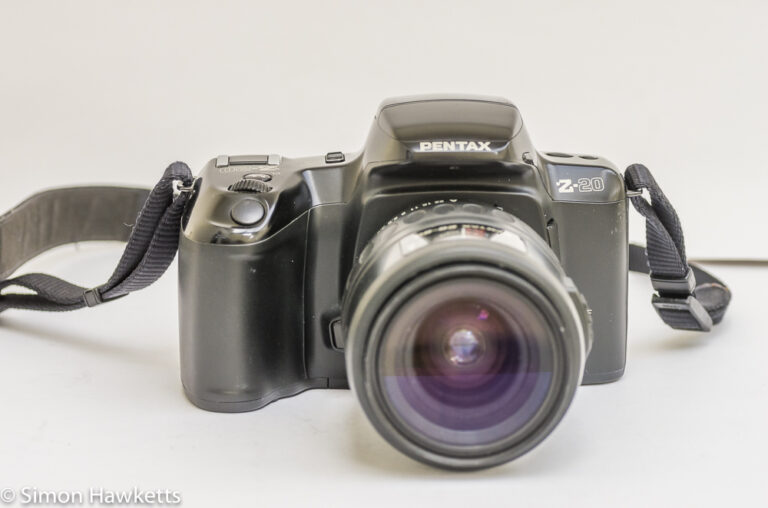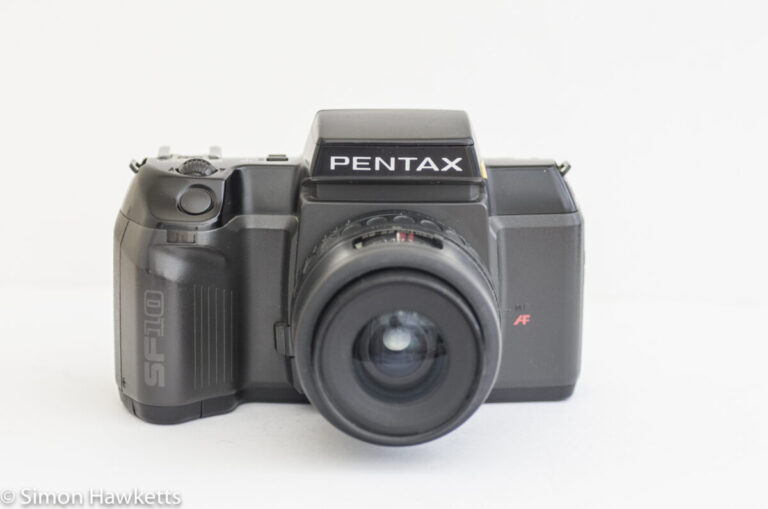Vintage camera collection – Canon T70
This is a brief post about the Canon T70 35 mm SLR, which I purchased from eBay UK for £11.50 about 9 months ago.
Canon T70 Images
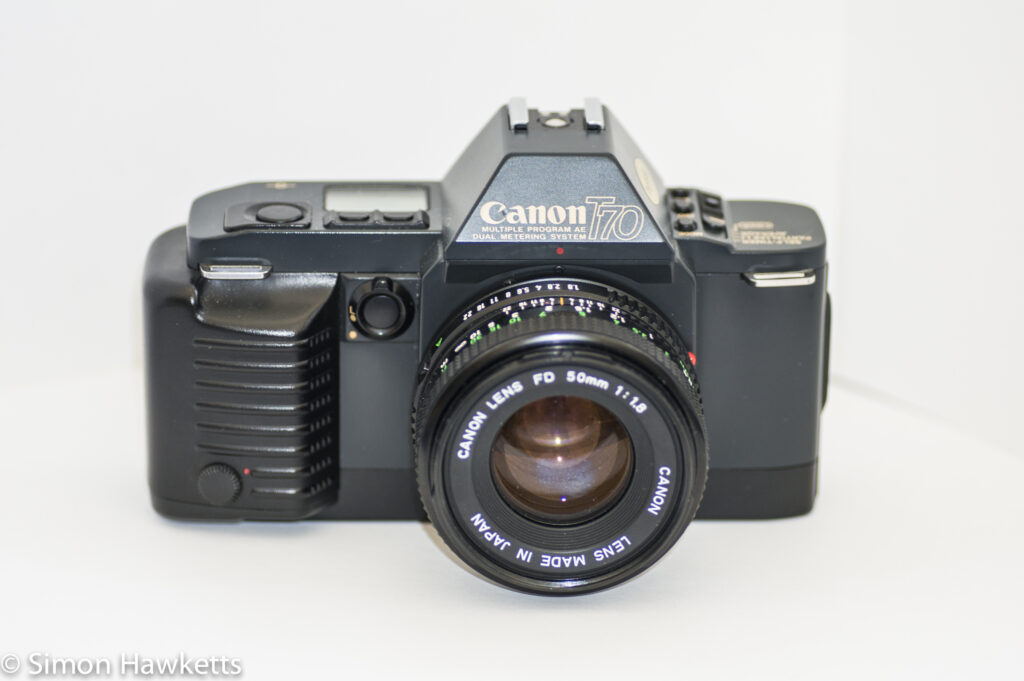
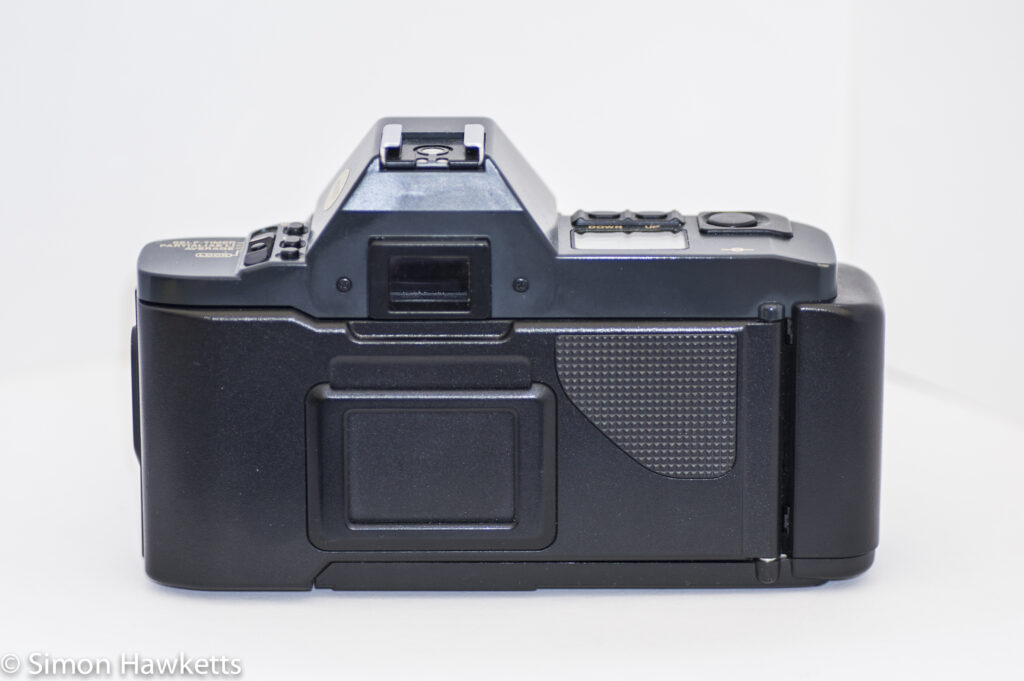
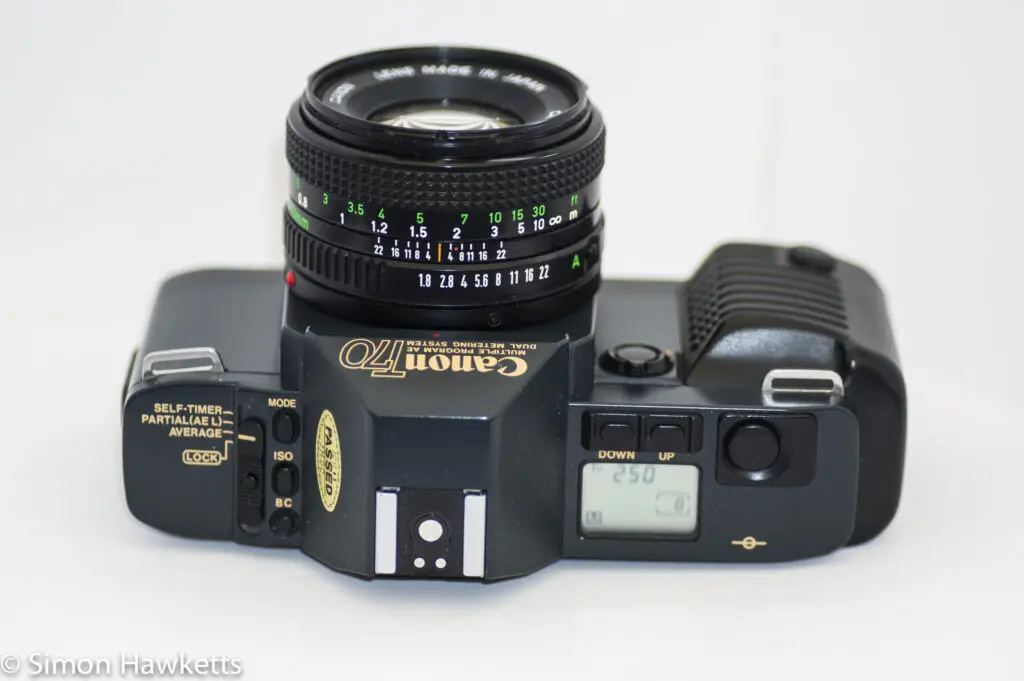
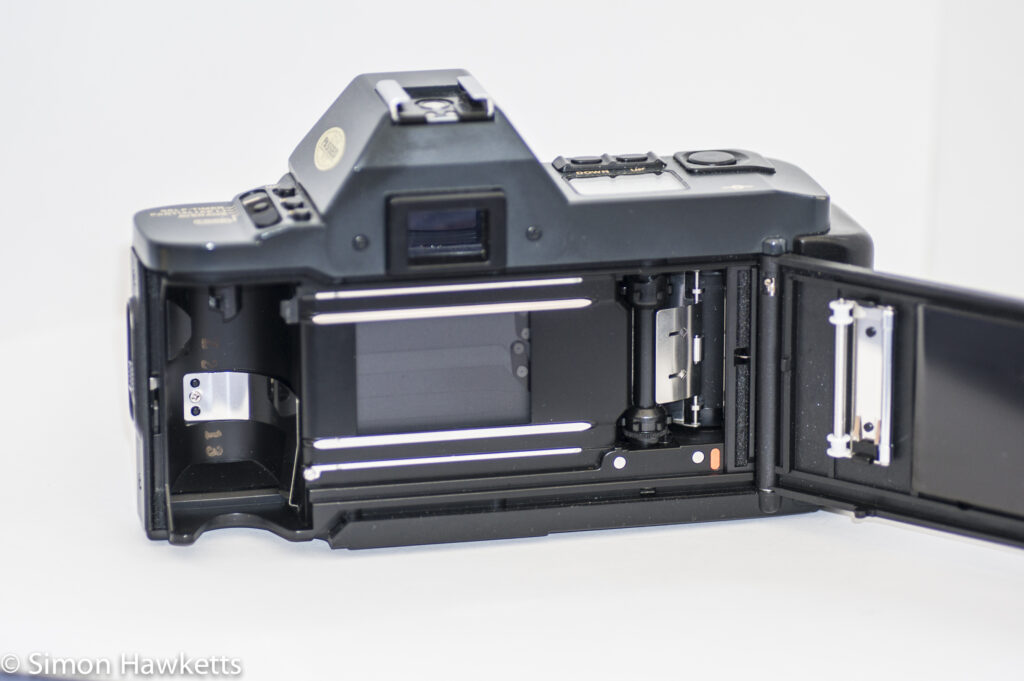
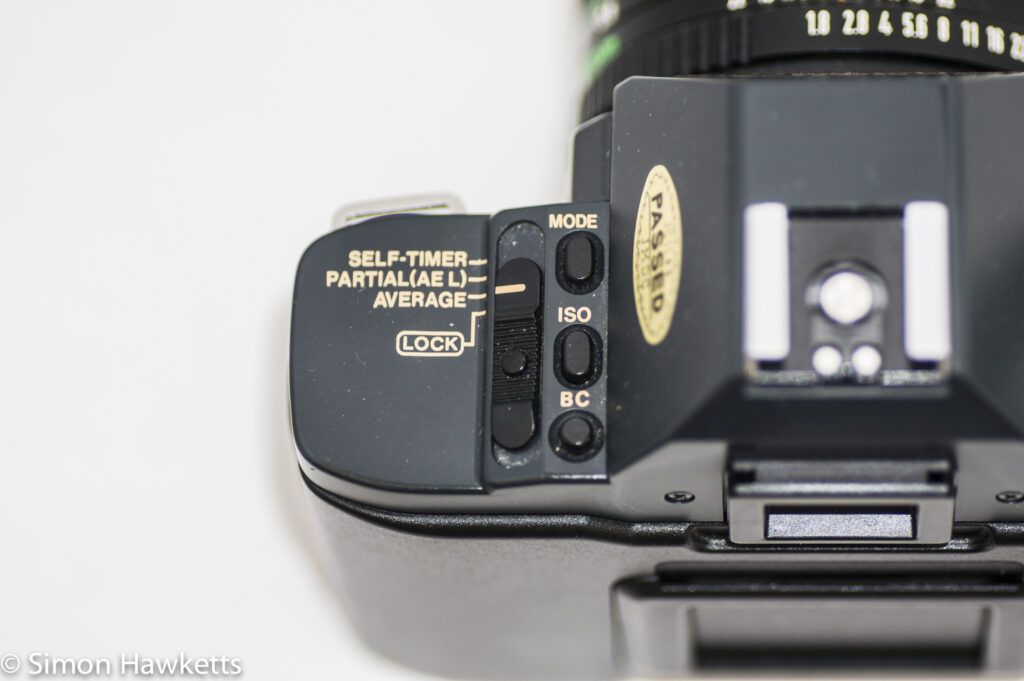

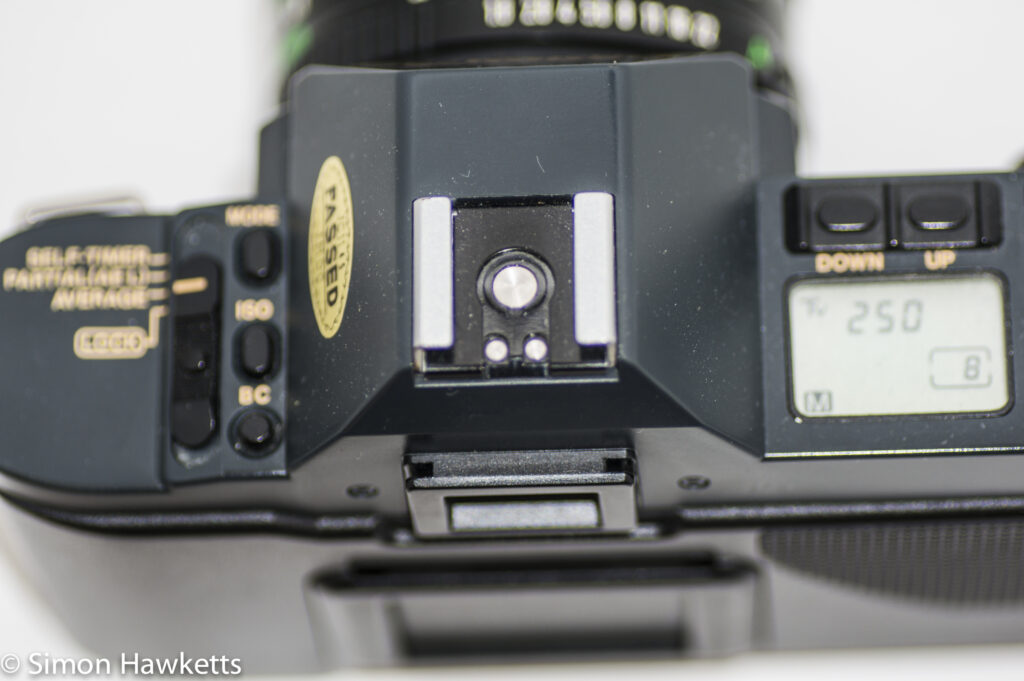
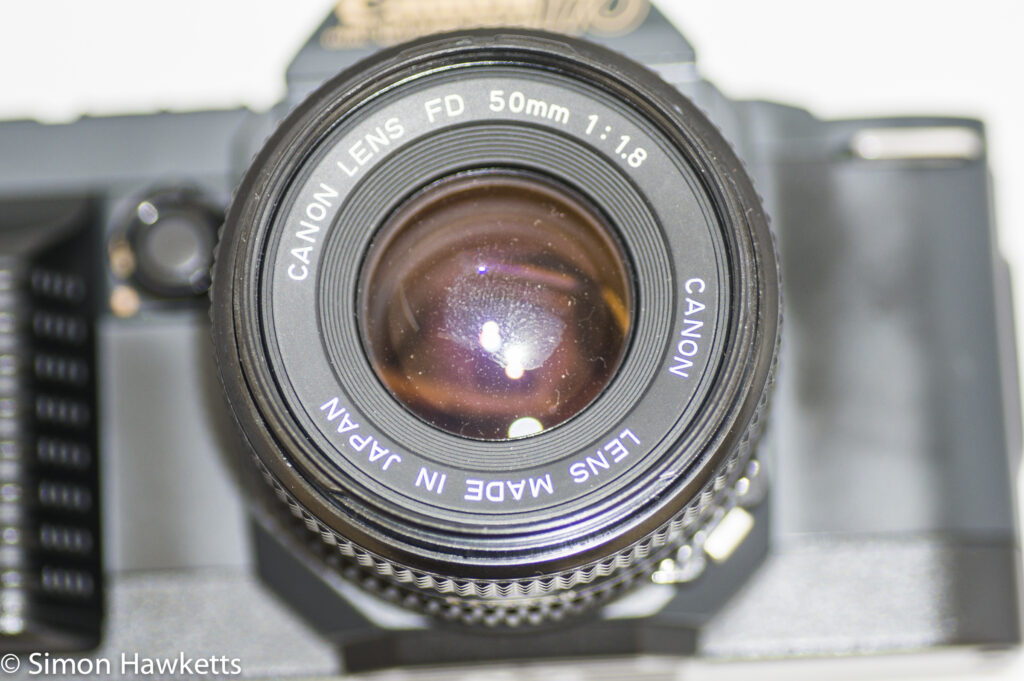
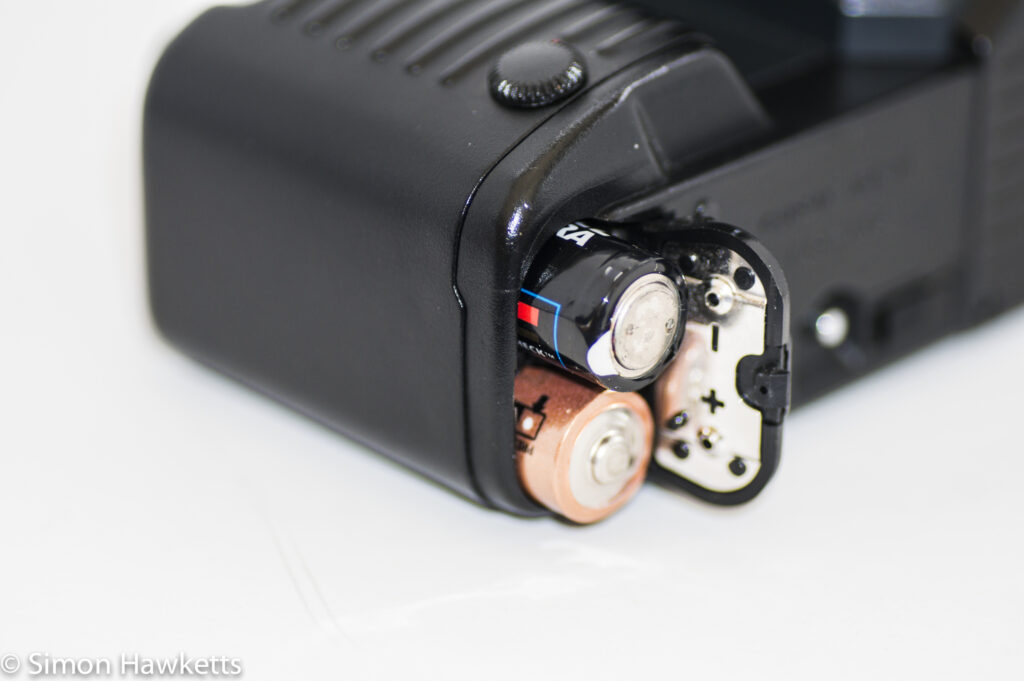

Canon T70 Description
This camera was the second in canon’s T series of manual focus, 35 mm SLR’s following on from the T50.
It was introduced by Canon in about 1984 and was considered to be an advanced camera in its day, being one of the first cameras to include a microprocessor to control the camera’s functions. It’s a typical 1980s design – quite blocky with push buttons to change the modes and settings, and also quite heavy.
There is a power-winder built into the camera, so there is no film advance lever and the whole camera looks quite minimalistic, especially if compared to a modern DSLR. Power is provided by two AA batteries located in the hand grip and accessed via a small lockable door in the bottom of the camera. A standard hot shoe is fitted above the prism housing, and a tripod bush is fitted to the bottom of the camera in line with the centre of the lens.
The lens fitted to my version of the camera is a Canon FD mount 50 mm f/1.8. It looks a nicely made lens, with a metal mount and smooth focus operation. As well as an ‘A’ setting, the 5 blade aperture ring has half-stop click stops.
Exposure modes.
I suppose the really novel feature of this camera is the automatic exposure modes it has.
The camera has program mode auto exposure, where the shutter speed and aperture are automatically set for the correct exposure – nothing particularly unusual there.
What is unusual for the time the camera was made is the fact that you can alter the program for particular types of shooting. This is what we would call ‘program shift’ these days. There are two different exposure modes called ‘Program Wide’ and ‘Program Tele’ which alter the selection the camera makes. Program Wide will keep the aperture smaller to keep more in-focus for landscapes, and Program Tele will keep the aperture wider to make the shutter speed shorter. I suppose these are the start of the modern day ‘Scene modes’.
As well as the Program modes, the camera also has Tv mode (shutter priority) where the user sets the shutter speed and the camera selects the aperture. In this mode, it’s also possible to switch to fully manual exposure by moving the lens off the A setting and on to the selected lens aperture.
Viewfinder.
The viewfinder is typical of 35 mm film cameras – large, bright and with a split focusing circle in the centre. There is also a microprism outer circle to assist focusing.
The exposure information is shown down the right-hand side of the screen. When the camera is in Program mode, this consists of the letter P at the top and the aperture the camera has selected below. At the same time, on the top plate LCD, the shutter speed is shown. I checked the shutter speed/aperture combination and confirmed that when the program mode is changed, the shutter/aperture selected is shifted by about 1 stop. I only tried a relatively simple test though – it’s possible it could shift further in different circumstances.
If the P in the viewfinder is flashing, it means there is not enough or too much light to take the photograph.
If the camera is placed in manual mode, the P is replaced with a letter M and the aperture required for the selected shutter speed is shown in the viewfinder.
Canon T70 Camera Specs.
- ISO range 12 – 1600 not DX coded
- Split image and microprism focusing
- Self timer mode
- Auto film advance
- Powered film rewind
- Shutter Priority auto exposure
- Exposure preview button
- Shutter speed lock button
- Program mode auto exposure (tele, normal & wide)
- Manual exposure mode
- AE lock
- Viewfinder aperture display
- Averaging or center mode exposure
- 2sec to 1/1000 sec shutter speed
- Self timer
- Hot Shoe flash
- Manual available on-line here
Discover more from Everything Vintage
Subscribe to get the latest posts sent to your email.

